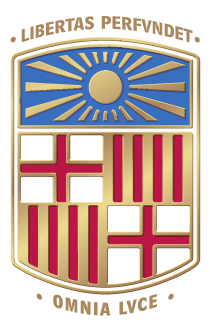- Inici
- Departament
- Nous estudiants
- Docència
- Grau
- Postgraus, Màsters i Doctorat
- Mobilitat i intercanvi
- Pla d’acció tutorial (PAT), Filologia Catalana
- Pla d'acció tutorial (PAT), Lingüística General
- Sortides professionals (Filologia Catalana)
- Sortides professionals (Lingüística General)
- Estudiants amb necessitats específiques
- Aula de Literatura i Meditació
- Horaris de visita
- Recerca
- Publicacions
- Actualitat
Conferència: "Language and society: How social pressures shape grammatical structure"
A càrrec de la Dra Limor Raviv (Max Planck Institute for Psycholinguistics, Nijmegen)
Data d'inici
18 juny 2020, 02:00
Data de finalització
18 juny 2020, 02:00
Lloc
Degut a les actuals circumstàncies, la conferència tindrà lloc en línia.
Els detalls sobre com unir-se a la'cte es difondran quan s'apropi la data de la conferència, i estaran disponibles a la pàgina web del grup Cognitive Biology of Language (cbl.ub.edu) i al seu compte de Twitter (@cbl_bcn).
Ens complau anunciar la conferència de la Dra. Limor Raviv (Max Planck Institute for Psycholinguistics, Nijmegen), patrocinada pel Programa de Doctorat en Ciència Cognitiva i Llenguatge de la Universitat de Barcelona. El títol de la xerrada és Language and society: How social pressures shape grammatical structure.
L'acte tindrà lloc (en línia) dijous 18 de juny, a les 16.00.
Abstract:
Why are there so many different languages in the world? How much do languages differ from each other in terms of their linguistic structure and their learnability? And how do such differences come about?
One possibility is that linguistic diversity stems from differences in the social environments in which languages evolve. Specifically, it has been suggested that big and sparse communities tend to have languages that are structurally simpler and therefore easier to learn. In this talk, I examine these claims experimentally by analyzing the live formation and acquisition of new languages that were created in the lab by different micro-societies under different social conditions.
First, I used a novel group communication paradigm to test how the process of language emergence is shaped by the fact that languages evolve in different types of communities, i.e., with different population sizes and different social network structures. That is, do big and small groups develop different types of artificial languages in the lab? And is the process of language formation affected by the degree of connectivity in the group (i.e., whether participants are densely or sparsely connected)? Results from two experiments showed that larger groups developed languages that were more systematic, and did so faster and more consistently than small groups. In contrast, there was no evidence for a similar role of network connectivity, with dense and sparse groups reaching similar levels of linguistic structure over time.
Next, I used an individual learning paradigm to assess these emerging languages in terms of their learnability and productivity. Specifically, I asked whether more structured languages were easier to learn by new individuals, and whether languages created by big and small groups differed from each other in how easily they were used in new contexts. The results confirmed the relationship between systematicity and learnability: more structured languages were learned faster, better, and more reliably, regardless of whether they originated in big or small groups. Moreover, more structured languages allowed for more productive generalizations, and facilitated convergence and mutual understanding among strangers.


